Showing 61–70 of 1063 results
“An assemblage of twenty-six scholarly essays: in honour of Dr Kapila Vatsyayan, the book attempts to conjure up the integral vision of art — exploring, as it does, the underlying unity of different disciplines. Written by distinguished Indian and foreign scholars: artists, art historians, archaeologists, anthropologists, scientists, philosophers and litterateurs, who have shared or subscribed to Dr Vatsyayan’s holistic vision of arts, these essays look for the linkages that have existed within the arts, between the arts, and across the cultures — focusing, contextually, on the form, the content, and the vision of art in terms of time and space. With at once stimulating alternative viewpoints available to humankind today, the authors consider space, time and consciousness as they are related to, and expressed in, metaphor, symbol and creative process. Together with cross-cultural comparisons of art, the book also explores the future of man as an artist. Art: The Integral Vision, besides the Editors’ Introduction giving an overview on the presentations, is blessed by His Holiness the Dalai Lama’s personal message. A foremost authority on Indian art and culture, Dr Kapila Vatsyayan is well-known to all serious scholars of art history, religion, philosophy and cosmology. A prolific author and recipient of several honours, including the prestigious Padma Shree (1990) and Padma Vibhushan (2011), she has convincingly spelt out the unifying principles of cultural plurality and the interdependence and interrelatedness of creative arts. This holistic vision — unmistakably manifest in her writings — has come to finest fruition in her setting up (in 1985) the Indira Gandhi National Centre for the Arts (IGNCA), New Delhi. This is a fascinating book for wide-ranging specialists and students interested in the mathematical, geometrical, metaphysical, astrophysical, cosmological, philosophical, psychological, historical, mythological and metaphorical understanding of art, especially the Indian art.”
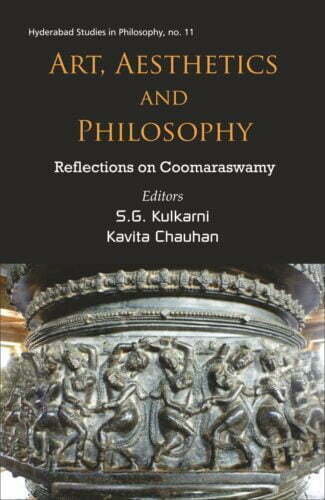
This book presents the varied reflections on Coomaraswamys personality as a philosopher, art historian, art curator and his strong positioning against the colonial teachings of Western art historians and philosophers on Indias art, civilization and culture, projecting an image of Indianness in every sphere.
The savants of the twentieth century have excavated the past to discerningly reveal the present. Swami Vivekananda, Rabindranath Tagore, Sri Aurobindo, Mahatma Gandhi and Ananda Coomaraswamy, among others, interpreted Indian aesthetics, civilization, culture and philosophy unearthing the Indian wisdom against the wrong interpretations and teachings of the Western colonial scholars. This volume, a collection of papers presented at a national seminar on the Philosophy of Ananda Coomaraswamy held in February 2011 at the University of Hyderabad, approaches Coomaraswamys philosophy on Indian aesthetics, life and religion from different perspectives.
The volume brings forth different facets of Coomaraswamy: as a catalyst in spiritualizing Indian arts; his views on modernism and anti-modernism; his efforts in aestheticizing India; his polemics of decolonization through art criticism; his aesthetical philosophy; his perception and understanding on art, culture and Indianness; his metaphysics; and his philosophical approach to visuals and materials from the lens of an art historian. It sketches Coomaraswamys multifaceted persona, enunciating that the crux of modern Indian philosophy is one of vision, rather than building theories.
In a nutshell this book presents the varied reflections on Coomaraswamys personality as a philosopher, art historian, art curator and his strong positioning against the colonial teachings of Western art historians and philosophers on Indias art, civilization and culture, projecting an image of Indianness in every sphere.
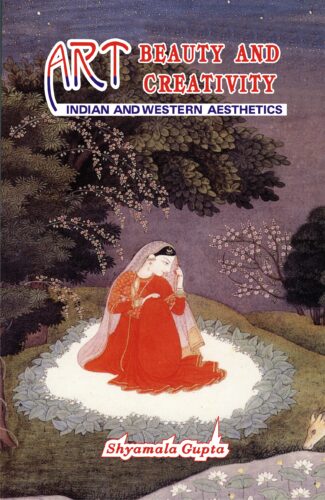
It studies the historical progression of aesthetics both Indian and Western since ancient times, focussing on the landmarks in the course of its development and theories on art, beauty and related concepts.
When the 18th century German philosopher, A.G. Baumgarten first introduced Aesthetics as an academic discipline to deal with the philosophy of beauty, he couldnt possibly have anticipated the controversies that have lately been raised by logical positivists, analytical schools, and even linguists -controversies questioning the validity, the very legitimacy, of a philosophical inquiry into beauty, art and creative processes. Notwithstanding the relatively more recent usage of the term proper, Aesthetics has a millennia-long history: beginning, in the West, with the old-world Greek philosophers, like Pythagoras, Plato, and Aristotle; and, in India, with the Vedic writings, more specifically, Bharata. Dr. Shyamala Guptas book is indisputably a painstaking effort trying to chart the historical progression of aesthetics: both Indian and Western -with focus not only on its evolutionary landmarks, but on its important concepts and theories as well. Schematically structured into two parts, Part 1 of the book examines the status of Indian aesthetics: its theories of rasa and dhvani, and, besides these, of its world- view of art. In its Part 2 are traced the development ofWestern theories of art and beauty, together with their attendant issues appearing, from time to time: from the days of ancient Greek philosophers to contemporary thinkers. Additionally, the authoress also tries to show how art is positioned vis-a-vis morality, science, sport and culture. A comprehensive, meticulously updated perspective on aesthetics, the book is sure to interest anyone concerned with the discipline: whether as a specialist, a student or a general reader.

It studies the historical progression of aesthetics both Indian and Western since ancient times, focussing on the landmarks in the course of its development and theories on art, beauty and related concepts.
When the 18th century German philosopher, A.G. Baumgarten first introduced’ Aesthetics’ as an academic discipline to deal with the philosophy of beauty, he couldn’t possibly have anticipated the controversies that have lately been raised by logical positivists, analytical schools, and even linguists -controversies questioning the validity, the very legitimacy, of a philosophical inquiry into beauty, art and creative processes. Notwithstanding the relatively more recent usage of the term proper, Aesthetics has a millennia-long history: beginning, in the West, with the old-world Greek philosophers, like Pythagoras, Plato, and Aristotle; and, in India, with the Vedic writings, more specifically, Bharata. Dr. Shyamala Gupta’s book is indisputably a painstaking effort trying to chart the historical progression of aesthetics: both Indian and Western -with focus not only on its evolutionary landmarks, but on its important concepts and theories as well. Schematically structured into two parts, Part 1 of the book examines the status of Indian aesthetics: its theories of rasa and dhvani, and, besides these, of its world- view of art. In its Part 2 are traced the development ofWestern theories of art and beauty, together with their attendant issues appearing, from time to time: from the days of ancient Greek philosophers to contemporary thinkers. Additionally, the authoress also tries to show how art is positioned vis-a-vis morality, science, sport and culture. A comprehensive, meticulously updated perspective on aesthetics, the book is sure to interest anyone concerned with the discipline: whether as a specialist, a student or a general reader.
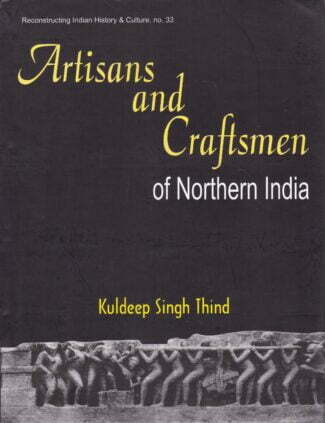
This book gives exhaustive and valuable insights into all aspects of the artisans and craftsmen of northern India who played a key role in the evolution of life between the seventh and twelfth centuries ce. This critical study examines the socio-economic conditions of the various categories of workers in stone, metal, clay, leather, cotton, salt, and other industries.
The basic aim of the book is to expose the major contributions of artisans and craftsmen in portraying the society in different perspectives. These artisans and craftsmen, were drawn mostly from the shudras, lower caste of the community, suppressed and have-nots section of the society, but were highly talented. The work is also designed to create interest among the reader and scholars alike, to understand the society of the period under reference through the immortal art of these creative people. The artisans such as potters, weavers, carpenters, architects, sculptors, brick-makers, metallurgy and metal workers, leather workers, painters, and the workers engaged in the profession of ivory, glass and mirror, perfume and cosmetic, musical instrument, oil, salt and liquor makers, etc. were the heroes of that time, who not only met the day-to-day requirement of the then society, but also portrayed different aspects of their life, in its true color, through their workmanship. It was the architect who designed and constructed houses to live in, as well as water tank, well and channel, royal building, stupa, temple and fort, bridge, pillar and rock-edict etc., which met the need of the society.
Today, we feel proud of the rich heritage of old Indian art and architecture, credit for which solely goes to the then artisan who crafted immortal creations. However, the invaluable contribution made by the historians in immortalizing their creations, by putting them in black and white, is no less important. It is the historian, whose mighty pen has immortalized not only Ashoka the great, as a king but also the creators of the stupas of his times on equal footings. It is with this aim in view that the present book has been presented to the posterity, in order to pay rich tributes to the creators of our rich cultural heritage.
Unluckly there was no proper institutionalized provision for the education of artisans and craftsmen, so generally the former adopted the occupation of their parents and hereditary skill was enhances as it was transferred from father to son, and generation to generation. Contemporary sources reveal that the social stautus of artisan class was based on the nature and economic conditions of a particular profession.
आर्यभटीय प्राचीन भारत के महान् ज्योतिषविद् एवम् गणितज्ञ आर्यभट (476-550) की प्रमुख रचना है। आर्या—छन्द में रचित 121 श्लोकों से युक्त चार अध्यायों की आर्यभटीय भारतीय गणित एवम् खगोलिकी का एक सैद्धान्तिक ग्रन्थ हैए जिसका व्यापक प्रभाव मध्यकालीन भारत के अतिरिक्त अरब देशों में भी रहा।
आर्यभट ने सौर–मण्डल के भूकेन्द्रिक सिद्धान्त को प्रतिपादित किया हैए जिसमें सूर्य और चन्द्रमा अपने-अपने अधिचक्रों पर चक्कर लगाते हुए पृथ्वी का चक्कर लगाते हैं। ग्रहण के स्वरूप तथा उसकी गणना.विधि प्रस्तुत की गई है। वह पहले खगोलविद् रहे जिन्होंने पृथ्वी की अपने अक्ष पर भ्रमण करने की अभिकल्पना की है। दशमलव के चार अंकों तक पाई (π) का शुद्ध मान ज्ञात किया है। आर्यभट ने अंकों के प्रदर्शन के लिए अक्षरों का प्रयोग कियाए लेकिन इसकी क्लिष्टता के कारण यह प्रचलित नहीं हो सका। संख्याओं के वर्गमूल एवम् घनमूल ज्ञात करने की विधि या अनिधार्य समीकरणों के हल की कुट्टक विधि को आजकल क्रिप्टोलॉजी में आर्यभट एल्गोरिथम के रूप में प्रयुक्त किया जा रहा है।
डॉ˚ केदारनाथ शुक्ल द्वारा आर्यभटीय के संस्कृत श्लोकों का हिन्दी रूपान्तरण एवम् आधुनिक पदों में उनकी सरल व्याख्या प्रस्तुत करने का एक लघु प्रयास किया गया है। प्राचीन भारतीय गणित एवम् खगोलिकी की यह सर्वोत्कृष्ट कीर्तिए आशा हैए सुविज्ञ छात्रों एवं जन.मानस के लिए हितकर होगी।
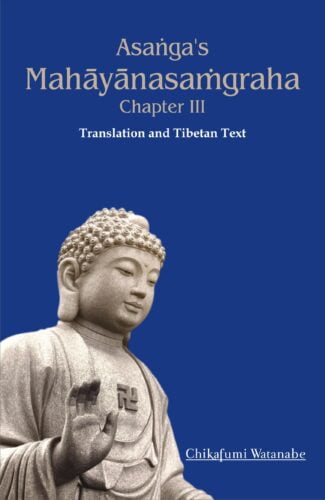
This volume presents an English translation of the third chapter of Mahayanasamgraha which discusses the bodhisattva’s entrance into the defining characteristics of the realization of vijnapti-matrata. It also contains English translations and Tibetan texts of the selected passages in the commentaries of the texts, i.e., Mahayanasamgrahabhasya and Mahayanasamgrahopanibandhana.
Mahayanasamgraha is one of the most important texts of the Yogacara School of Mahayana Buddhism. In this text, its author, Asanga, developed and systematized the Yogacara philosophy and praxis.
This volume presents an English translation of Mahayanasamgrahas third chapter which discusses the bodhisattvas entrance into the defining characteristics of what is to be known, i.e. the realization of vijnapti-matrata. The translation is based on the Tibetan text edited by utilizing and consulting all available Tibetan editions sDe dge, Co ne, Peking, sNar thang, Taipei, Lamotte, Yamaguchi and Nagao. This volume also contains English translations and Tibetan texts of the selected passages in the commentaries of the text, i.e. Mahayanasamgrahabhasya by Vasubandhu and Mahayanasamgrahopanibandhana by Asvabhava. The translation of the texts in this volume aims to advance a scholarly understanding of praxis, and the relation of the practical and philosophical theories described in the third chapter of Mahayanasamgraha and its commentaries.
The centuries-old exchange of ideas, knowledge systems, resources, skills and materials among the people of the Asian continent left a lasting legacy in various spheres of human experience. This was a dialogue that involved rich exchange of religious, literary, aesthetic and artistic ideas and forms across the regions of Asia. The general impressions of an art, which is spiritual and magical in character, highly charged with literary myths and legends, and presented through a seemingly improvised styles in various art forms, provide us with a clue of an understanding of the fundamental foundations of the arts in Asia.
This volume contains the papers of the panel on ‘Asian Aesthetic Theories and Art Forms’ in first two sections. This panel was a part of the international conference on “Asian Encounters: Networks of Cultural Interaction” held in New Delhi. The volume reaffirms that the Indian theory of art as a creative process and creative expression is broadly true for entire Asian theory of art and aesthetics and it opens up a pan-Asian theory of art and aesthetics.
‘Representation of Asian Art in Asian Museums’ was another panel of the conference. The volume contains three papers from that panel also and the transcript of the dialogue held on ‘Cross Cultural Frontiers in the Study of the Past’.
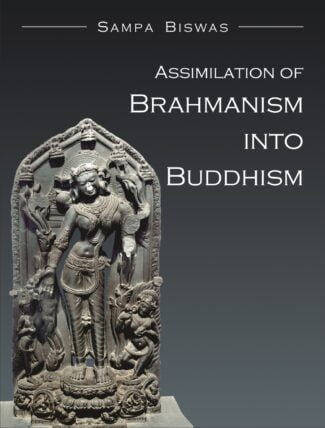
It has its focus on Buddhism and Buddhist art of early medieval period in India. The introduction of Tantrism bought Buddhism and Brahmanism closer to each other, both in enmity and similarity. It opened the gate to the vast field of Buddhist iconography, Tantric practices, deities, mudras and mandalas.
Assimilation of Brahmanism into Buddhism is a research work on Buddhism and Buddhist art of early medieval period in India. Archaeological materials and literary records suggest that Buddhism had a continuous existence during the third century bce to the thirteenth century ce in India. Though early Buddhism was totally different in its doctrines and faith from the Brahmanical system, the Buddhism of today is a religio-philosophical system having assimilated and adopted new ideas and beliefs from the environment in which it was born and nurtured.
The introduction of Tantrism bought Buddhism and Brahmanism closer to each other. It opened the gate to the vast field of Buddhist iconography along with Tantric practices, deities, mudras and mandalas. Many of these were influenced by the Brahmanic idea of godhead and some were the combination of one or more ideas of Brahmanic divinities. There was assimilation of a number of factors between Brahmanism and Buddhism.
This scholarly volume addresses the different aspects of this assimilation process by getting into a historical study of Hinayana and Mahayana Buddhism; outlining the political history, and socio-economic and religious changes during 300700 ce; scanning the political and economic background and the spreading of esoteric Buddhism; emergence of Vajrayana Buddhism; and providing a detailed sketch of Vajrayana images.
Astrology is the oldest of all it sciences. We find a belief that Astrology spread throughout the whole world from Babylonia and Chaldea. It taught the people to lift their aspirations by faith, hope and reverence, through the planetary spirits to the Logos of our solar system, the One Supreme and Universe Self.
Many attempts have been made to bring the study of Astrology within the reach of all persons endowed with a thinking mind, but owing to the magnitude of the subject and the great difficulty of reducing a metaphysical science into terms of natural philosophy, the object has hither to been only partly achieved.
When we come to consider that Astrology was the beginning of nearly all that we hold valuable in art, literature, religion and science; that the constellations were our first pictures; and that astronomy sprang from Chaldean Astrology, we may judge of its value to humanity.
An attempt has been made here to place before the world the system of Astrology. It would be useful for the scholars, intellectuals, astrologers as well as common men.
| There are no products |